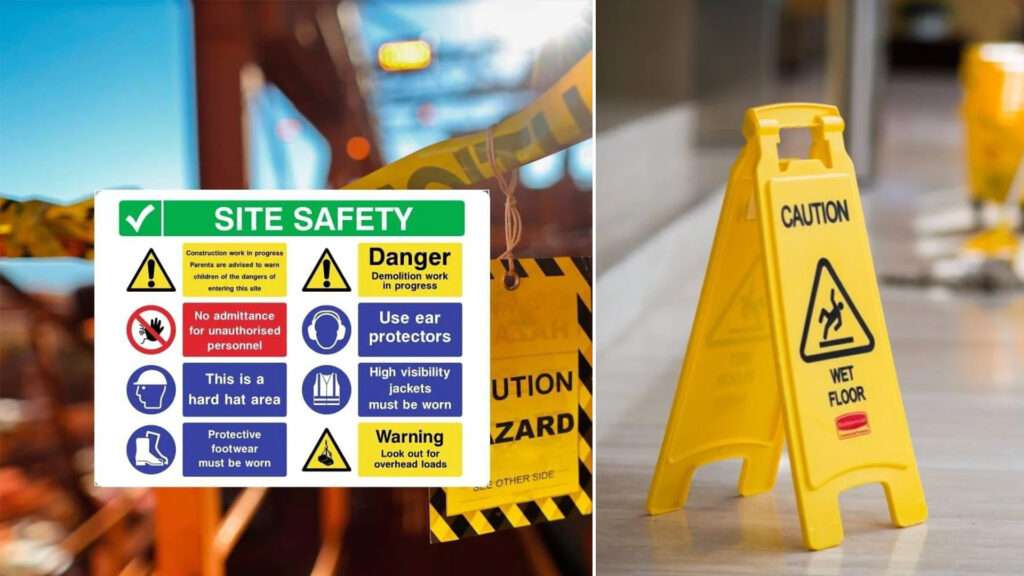In any workplace or business environment, safety is paramount. Whether you run a retail store, a warehouse, or an office, caution signs are essential for preventing accidents, maintaining a safe environment, and complying with health and safety regulations. In Luton, businesses must take proactive steps to ensure that safety is prioritized, and safety caution signs are one of the most effective ways to do this.
In this blog, we’ll walk through the top 10 caution signs every business in Luton should display to protect their staff, visitors, and customers.
1. Wet Floor Signs
Wet floors can be a major slip hazard in places like cafes, restaurants, and offices. Wet floor signs are essential to alert employees and customers to potentially dangerous conditions. These signs should be highly visible and placed in areas where spills are likely to occur or after cleaning.
Example use: After mopping floors or in areas that frequently get wet (e.g., kitchens or bathrooms).
2. Caution: High Voltage Signs
Electrical hazards are a serious concern in any workplace. High voltage caution signs are critical in areas with exposed electrical equipment or machinery. These signs warn employees to avoid touching high-voltage areas, thus preventing electrical accidents and potential injuries.
Example use: Near electrical panels, transformers, or any machinery with high voltage.
3. Flammable Materials Signs
For businesses that handle chemicals, gas, or other flammable materials, displaying flammable material caution signs is essential. These signs warn employees and visitors about the presence of flammable substances and the associated fire risks.
Example use: In warehouses, laboratories, or any area where chemicals are stored or used.
4. Caution: Sharp Edges Signs
Sharp tools, machinery, and materials can present a significant risk to workers. A sharp edges caution sign alerts people to the danger of cutting themselves. It’s essential to display this sign near any equipment or tools with sharp edges.
Example use: Around cutting tools, machinery, or storage areas with sharp materials.
5. Danger: Construction Zone Signs
If your business is undergoing construction or renovation, it’s essential to display danger construction zone signs to prevent accidents. These signs inform visitors and workers of the ongoing construction and potential dangers such as falling objects or debris.
Example use: Construction sites or areas undergoing maintenance or renovation.
6. Caution: Slippery Surface Signs
A slippery surface caution sign is important in any area where surfaces may become slick due to moisture, oil spills, or other substances. This type of sign helps minimize slip-and-fall accidents, which are among the most common workplace injuries.
Example use: Near entrances, parking lots, or any place with wet or oily surfaces.
7. Caution: Hot Surfaces Signs
Businesses that work with hot equipment, ovens, machinery, or surfaces need hot surfaces caution signs to prevent burns and injuries. These signs should be clearly visible to warn people not to touch hot items.
Example use: In kitchens, laboratories, factories, and around heating equipment.
8. Caution: Authorized Personnel Only Signs
Some areas in your business may contain restricted access, such as storage rooms or areas with dangerous equipment. A “Authorized Personnel Only” sign ensures that only qualified employees enter these spaces, reducing the risk of injury or unauthorized access.
Example use: In server rooms, warehouses, or areas with hazardous materials.
9. Caution: Heavy Machinery Signs
For businesses with heavy machinery or large equipment, it’s essential to post heavy machinery caution signs to alert workers to the presence of potentially dangerous machinery. These signs are especially important in warehouses, construction sites, and factories.
Example use: Near construction sites, manufacturing floors, or large machinery areas.
10. Caution: Toxic Chemicals Signs
If your business handles or stores toxic chemicals, it’s vital to display toxic chemicals caution signs in the area. These signs warn people of the potential risks associated with exposure and ensure that the appropriate safety precautions are followed.
Example use: In laboratories, chemical processing plants, or any business that uses hazardous substances.
Why Are Caution Signs Important for Your Business?
Caution signs are essential for creating a safe work environment. By displaying the proper signs in the right places, you can help prevent accidents, avoid legal liability, and ensure your workplace complies with safety regulations. It also shows that your business takes the safety of its employees, visitors, and customers seriously. Using the right safety signs is a key step in promoting awareness and preventing potential hazards before they occur.
Best Practices for Displaying Caution Signs
Placement: Ensure that your caution signs are clearly visible. Place them in high-traffic areas where people are most likely to encounter the hazard.
Clarity: Use simple, universally recognized symbols and clear text. Make sure that the meaning of the sign is immediately understood.
Compliance: Ensure that all your signs comply with local health and safety regulations, including those set out by the Health and Safety Executive (HSE).
Maintenance: Regularly inspect and replace damaged or faded signs to ensure that they continue to provide clear warnings.
Custom Caution Signs from Signart Pro UK
At Signart Pro UK, we specialize in designing and producing custom caution signs tailored to your business’s needs. Whether you require danger signs, safety caution signs, or workplace hazard signs, we can help ensure your workplace remains safe and compliant with UK regulations.
If you’re looking for high-quality safety signage for your Luton business, get in touch with us today. Explore our custom caution signs or contact us for expert advice and design services.




